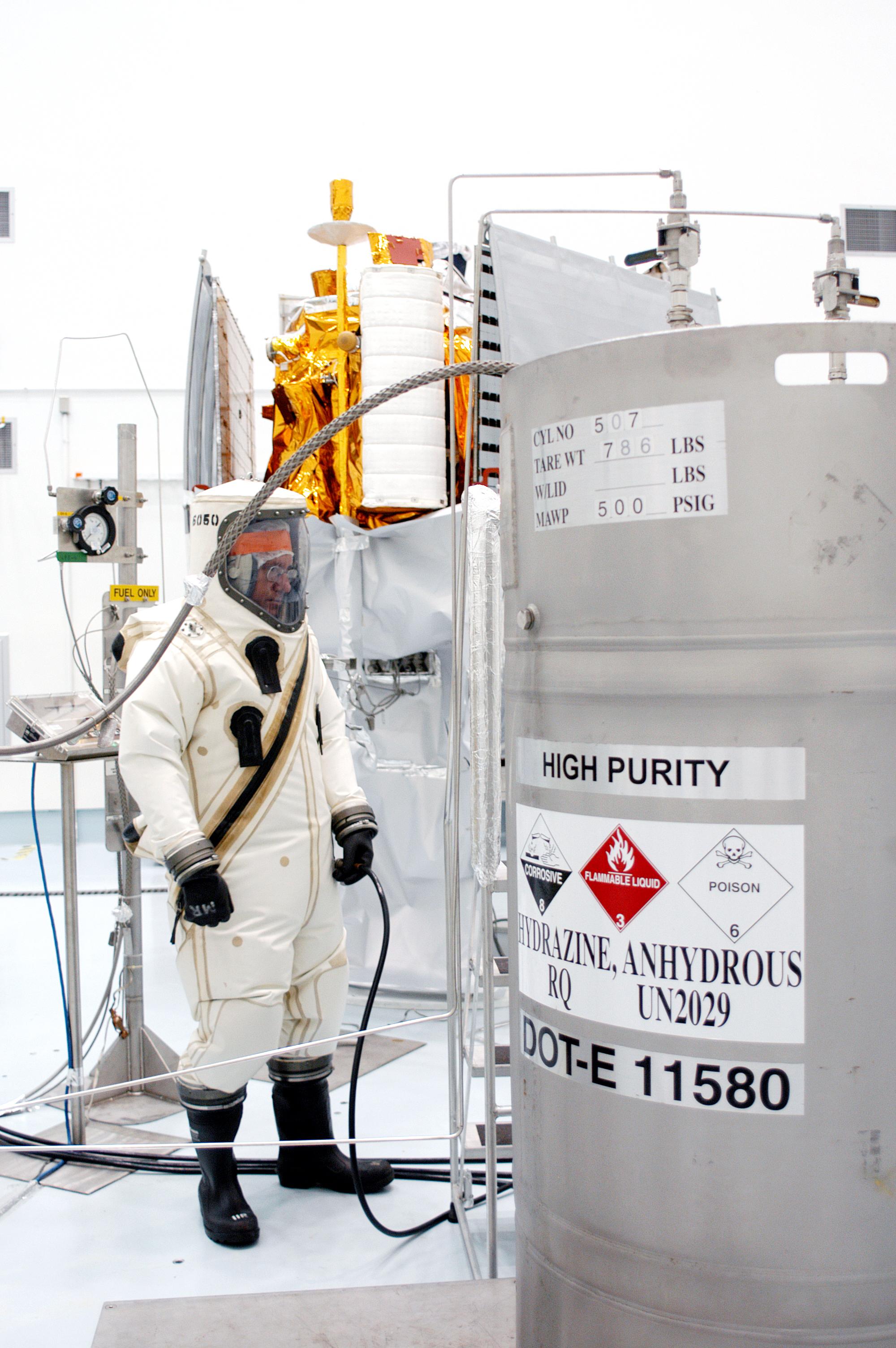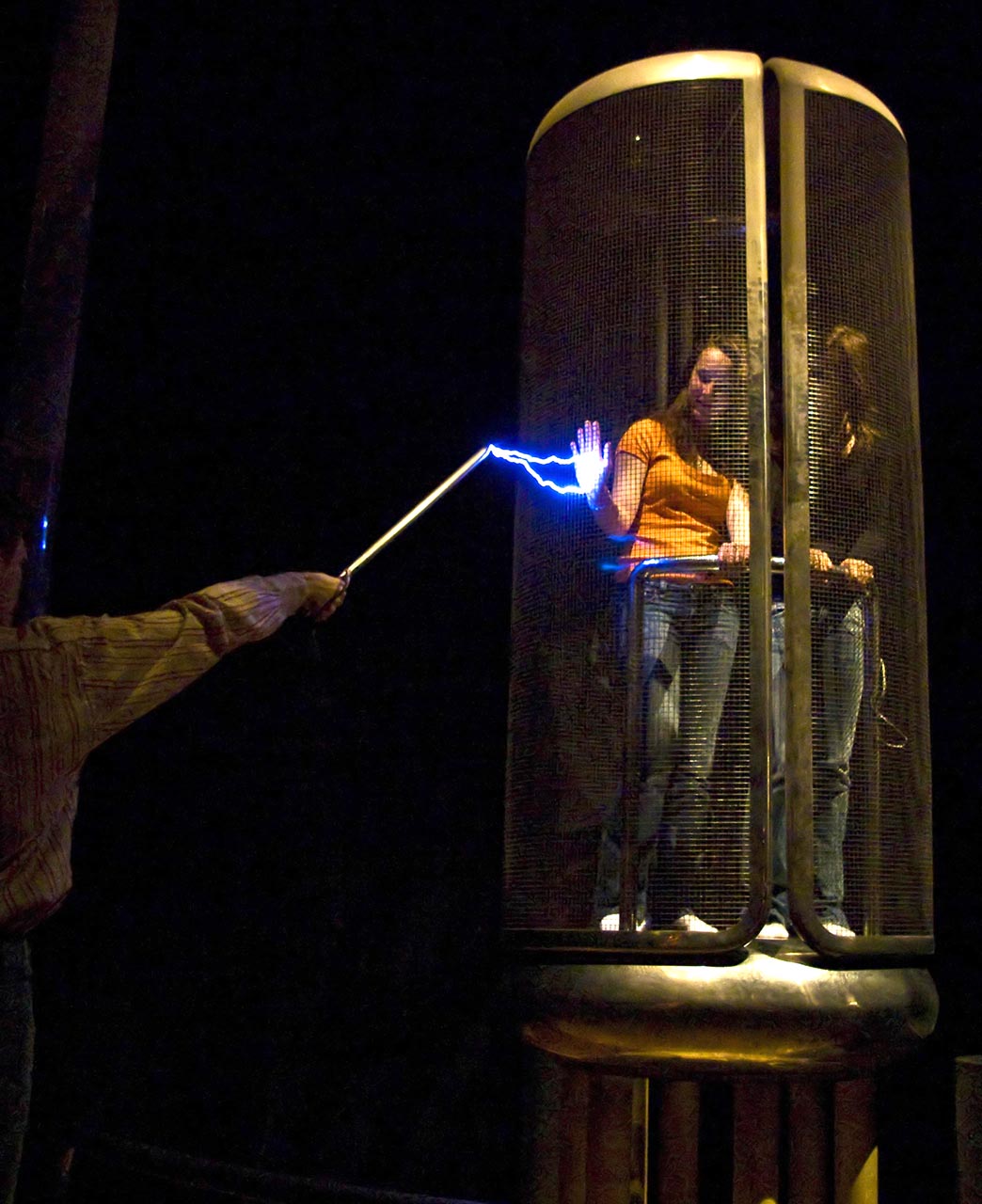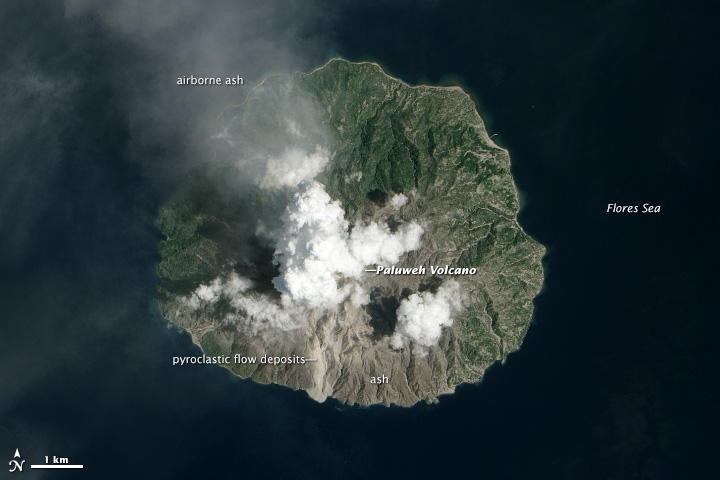|
Mars Polar Lander
The Mars Polar Lander, also known as the Mars Surveyor '98 Lander, was a 290-kilogram uncrewed spacecraft lander launched by NASA on January 3, 1999, to study the soil and climate of Planum Australe, a region near the south pole on Mars. It formed part of the Mars Surveyor '98 mission. On December 3, 1999, however, after the descent phase was expected to be complete, the lander failed to reestablish communication with Earth. A post-mortem analysis determined the most likely cause of the mishap was premature termination of the engine firing prior to the lander touching the surface, causing it to strike the planet at a high velocity. The total cost of the Mars Polar Lander was US$165 million. Spacecraft development cost US$110 million, launch was estimated at US$45 million, and mission operations at US$10 million. Mission background History As part of the Mars Surveyor '98 mission, a lander was sought as a way to gather climate data from the ground in conjunction with an orb ... [...More Info...] [...Related Items...] OR: [Wikipedia] [Google] [Baidu] |
Mars
Mars is the fourth planet from the Sun. It is also known as the "Red Planet", because of its orange-red appearance. Mars is a desert-like rocky planet with a tenuous carbon dioxide () atmosphere. At the average surface level the atmospheric pressure is a few thousandths of Earth's, atmospheric temperature ranges from and cosmic radiation is high. Mars retains some water, in the ground as well as thinly in the atmosphere, forming cirrus clouds, frost, larger polar regions of permafrost and ice caps (with seasonal snow), but no liquid surface water. Its surface gravity is roughly a third of Earth's or double that of the Moon. It is half as wide as Earth or twice the Moon, with a diameter of , and has a surface area the size of all the dry land of Earth. Fine dust is prevalent across the surface and the atmosphere, being picked up and spread at the low Martian gravity even by the weak wind of the tenuous atmosphere. The terrain of Mars roughly follows a north-south ... [...More Info...] [...Related Items...] OR: [Wikipedia] [Google] [Baidu] |
Lander (spacecraft)
A lander is a spacecraft that descends towards, then comes to rest on the surface of an astronomical body other than Earth. In contrast to an impact probe, which makes a hard landing that damages or destroys the probe upon reaching the surface, a lander makes a soft landing after which the probe remains functional. For bodies with atmospheres, the landing occurs after atmospheric entry. In these cases, landers may employ parachutes to slow them down enough to maintain a low terminal velocity. In some cases, small landing rockets will be fired just before impact in order to reduce the lander's velocity. Landing may be accomplished by controlled descent and set down on landing gear, with the possible addition of a post-landing attachment mechanism (such as the mechanism used by ''Philae'') for celestial bodies with low gravity. Some missions (for example, Luna 9 and Mars Pathfinder) used inflatable airbags to cushion the lander's impact rather than utilizing more traditional ... [...More Info...] [...Related Items...] OR: [Wikipedia] [Google] [Baidu] |
Monopropellant Rocket
A monopropellant rocket (or "monochemical rocket") is a rocket that uses a single chemical as its propellant. Monopropellant rockets are commonly used as small attitude and trajectory control rockets in satellites, rocket upper stages, crewed spacecraft, and spaceplanes. Chemical-reaction based monopropellant rockets The simplest monopropellant rockets depend on the chemical decomposition of a storable propellant after passing it over a catalyst bed. The power for the thruster comes from the high pressure gas created during the decomposition reaction that allows a Rocket engine nozzle, rocket nozzle to speed up the gas to create thrust. The most commonly used monopropellant is hydrazine (), a compound unstable in the presence of a Catalysis, catalyst and which is also a strong reducing agent. The most common catalyst is granular alumina (aluminum oxide, ) coated with iridium. These coated granules are usually under the commercial labels Aerojet S-405 (previously made by Shell plc, ... [...More Info...] [...Related Items...] OR: [Wikipedia] [Google] [Baidu] |
Hydrazine
Hydrazine is an inorganic compound with the chemical formula . It is a simple pnictogen hydride, and is a colourless flammable liquid with an ammonia-like odour. Hydrazine is highly hazardous unless handled in solution as, for example, hydrazine hydrate (). Hydrazine is mainly used as a foaming agent in preparing Polymeric foam, polymer foams, but applications also include its uses as a precursor (chemistry), precursor to pharmaceuticals and agrochemicals, as well as a long-term storable propellant for in-outer space, space spacecraft propulsion. Additionally, hydrazine is used in various rocket propellant, rocket fuels and to prepare the gas precursors used in airbags. Hydrazine is used within both nuclear and conventional electrical power plant steam cycles as an oxygen scavenger to control concentrations of dissolved oxygen in an effort to reduce corrosion. , approximately 120,000 tons of hydrazine hydrate (corresponding to a 64% solution of hydrazine in water by weight) we ... [...More Info...] [...Related Items...] OR: [Wikipedia] [Google] [Baidu] |
Loop Heat Pipe
A loop heat pipe (LHP) is a two-phase heat transfer device that uses capillary action to remove heat from a source and passively move it to a condenser or radiator. LHPs are similar to heat pipes but have the advantage of being able to provide reliable operation over long distance and the ability to operate against gravity. They can transport a large heat load over a long distance with a small temperature difference. Different designs of LHPs ranging from powerful, large size LHPs to miniature LHPs ( micro-loop heat pipe) have been developed and successfully employed in a wide sphere of applications both ground and space-based applications. Construction The most common coolants used in LHPs are anhydrous ammonia and propylene. LHPs are made by controlling the volumes of the reservoir carefully, condenser and vapor and liquid lines so that liquid is always available to the wick. The reservoir volume and fluid charge are set so that there is always fluid in the reservoir even if t ... [...More Info...] [...Related Items...] OR: [Wikipedia] [Google] [Baidu] |
Faraday Cage
A Faraday cage or Faraday shield is an enclosure used to block some electromagnetic fields. A Faraday shield may be formed by a continuous covering of conductive material, or in the case of a Faraday cage, by a mesh of such materials. Faraday cages are named after scientist Michael Faraday, who first constructed one in 1836. Faraday cages work because an external electrical field will cause the electric charges within the cage's conducting material to be distributed in a way that cancels out the field's effect inside the cage. This phenomenon can be used to protect sensitive electronic equipment (for example RF receivers) from external radio frequency interference (RFI) often during testing or alignment of the device. Faraday cages are also used to protect people and equipment against electric currents such as lightning strikes and electrostatic discharges, because the cage conducts electrical current around the outside of the enclosed space and none passes through the interior. ... [...More Info...] [...Related Items...] OR: [Wikipedia] [Google] [Baidu] |
Carbon-fiber Reinforced Polymer
Carbon fiber-reinforced polymers (American English), carbon-fibre-reinforced polymers (Commonwealth English), carbon-fiber-reinforced plastics, carbon-fiber reinforced-thermoplastic (CFRP, CRP, CFRTP), also known as carbon fiber, carbon composite, or just carbon, are extremely strong and light fiber-reinforced plastics that contain carbon fibers. CFRPs can be expensive to produce, but are commonly used wherever high strength-to-weight ratio and stiffness (rigidity) are required, such as aerospace, superstructures of ships, automotive, civil engineering, sports equipment, and an increasing number of consumer and technical applications. The binding polymer is often a thermoset resin such as epoxy, but other thermoset or thermoplastic polymers, such as polyester, vinyl ester, or nylon, are sometimes used. The properties of the final CFRP product can be affected by the type of additives introduced to the binding matrix (resin). The most common additive is silica, but other addi ... [...More Info...] [...Related Items...] OR: [Wikipedia] [Google] [Baidu] |
Honeycomb Structure
Honeycomb structures are natural or man-made structures that have the geometry of a honeycomb to allow the minimization of the amount of used material to reach minimal weight and minimal material cost. The geometry of honeycomb structures can vary widely but the common feature of all such structures is an array of hollow cells formed between thin vertical walls. The cells are often columnar and hexagonal in shape. A honeycomb-shaped structure provides a material with minimal density and relative high out-of-plane compression properties and out-of-plane shear properties. Man-made honeycomb structural materials are commonly made by layering a honeycomb material between two thin layers that provide strength in tension. This forms a plate-like assembly. Honeycomb materials are widely used where flat or slightly curved surfaces are needed and their high specific strength is valuable. They are widely used in the aerospace industry for this reason, and honeycomb materials in alumi ... [...More Info...] [...Related Items...] OR: [Wikipedia] [Google] [Baidu] |
New Millennium Program
New Millennium Program (NMP) was a NASA project with focus on engineering validation of new technologies for space applications. Funding for the program was eliminated from the FY2009 budget by the 110th United States Congress, effectively leading to its cancellation. The spacecraft in the New Millennium Program were originally named "Deep Space" (for missions demonstrating technology for planetary missions) and "Earth Observing" (for missions demonstrating technology for Earth orbiting missions). With a refocussing of the program in 2000, the Deep Space series was renamed "Space Technology". NMP missions Missions flown *Deep Space 1 – standalone spacecraft testing solar electric propulsion, autonomous operation etc.; successful mission 1998-2001 including comet and asteroid encounters * Deep Space 2 – Mars surface penetrators flown with Mars Polar Lander in 1999; (failed) * Earth Observing 1 (EO-1) – (launched 2000) *Space Technology 5 – a cluster of three satellites ... [...More Info...] [...Related Items...] OR: [Wikipedia] [Google] [Baidu] |
Impactor (spacecraft)
A lander is a spacecraft that descends towards, then comes to rest on the surface of an astronomical body other than Earth. In contrast to an impact probe, which makes a hard landing that damages or destroys the probe upon reaching the surface, a lander makes a soft landing (rocketry), soft landing after which the probe remains functional. For bodies with Celestial body atmosphere, atmospheres, the landing occurs after atmospheric reentry, atmospheric entry. In these cases, landers may employ Parachute, parachutes to slow them down enough to maintain a low terminal velocity. In some cases, small landing rockets will be fired just before impact in order to reduce the lander's velocity. Landing may be accomplished by Spacecraft attitude control, controlled descent and set down on Spacecraft lander landing gear, landing gear, with the possible addition of a post-landing attachment mechanism (such as the mechanism used by ''Philae (spacecraft), Philae'') for celestial bodies with lo ... [...More Info...] [...Related Items...] OR: [Wikipedia] [Google] [Baidu] |
Topography
Topography is the study of the forms and features of land surfaces. The topography of an area may refer to the landforms and features themselves, or a description or depiction in maps. Topography is a field of geoscience and planetary science and is concerned with local detail in general, including not only relief, but also natural, artificial, and cultural features such as roads, land boundaries, and buildings. In the United States, topography often means specifically relief, even though the USGS topographic maps record not just elevation contours, but also roads, populated places, structures, land boundaries, and so on. Topography in a narrow sense involves the recording of relief or terrain, the three-dimensional quality of the surface, and the identification of specific landforms; this is also known as geomorphometry. In modern usage, this involves generation of elevation data in digital form ( DEM). It is often considered to include the graphic representation of t ... [...More Info...] [...Related Items...] OR: [Wikipedia] [Google] [Baidu] |
Geomorphology
Geomorphology () is the scientific study of the origin and evolution of topographic and bathymetric features generated by physical, chemical or biological processes operating at or near Earth's surface. Geomorphologists seek to understand why landscapes look the way they do, to understand landform and terrain history and dynamics and to predict changes through a combination of field observations, physical experiments and numerical modeling. Geomorphologists work within disciplines such as physical geography, geology, geodesy, engineering geology, archaeology, climatology, and geotechnical engineering. This broad base of interests contributes to many research styles and interests within the field. Overview Earth's surface is modified by a combination of surface processes that shape landscapes, and geologic processes that cause tectonic uplift and subsidence, and shape the coastal geography. Surface processes comprise the action of water, wind, ice, wildfire, and lif ... [...More Info...] [...Related Items...] OR: [Wikipedia] [Google] [Baidu] |










